An interesting part about foraging is sometimes you get a letter like this one about fireweed.
I’m honestly perplexed with regards to the culinary reputation of this plant. Every chef I’ve shown this plant to so far has been really impressed, in a good way. The distinct perfume and flavor goes amazingly well in multiple preparations. I did cold blanched greens Korean style with sesame oil and soy sauce, brown rice steamed with chopped fireweed and shiso, and a quick chutney pickle of peeled fireweed stems and leaf tips, poor man’s pepper, nasturtium leaves, chopped apples, cucumber and coriander. I also used it as a soup base with lamb’s quarter and nettle. One vegetarian cold soup with raw goat buttermilk and the cooked wild greens puree, and one with chicken broth. The blanched greens also went into translucent summer roll wraps with sauteed pickerelweed, plantain seed heads, chanterelles, venison and nasturtium flowers, to be served with the chutney.
Not a single person in the large class (22 students + wildlife center interns and instructors) found the fireweed to be less than delicious prepared by these methods. All of the above dishes vanished like snow on a hot griddle, and I had to go harvest more fireweed after class so there would be any left for my chef buddy to play with at his restaurant. They ate it all. Identification is 100% certain; this is Erechtites hieraciifolia. Properly prepared, it is delicious, and all of the local professional chefs whom I’ve gotten interested in wildcrafted foods are pretty excited to work with this plant. It’s not at its best raw and unadorned, but a little kitchen tweaking and flavor pairing and it’s suddenly amazing. All I can say is if other foragers don’t know how to use and appreciate this green, that just leaves more for me and my chef friends!
Thank you for the letter, and the possible uses. Wild foods bring different flavors, texture, and nutrition to the table.
When something is ripe or ready to be harvested varies. A window of a few weeks is normal for most species but this year the window has been opened some. Pindo Palms perhaps demonstrate that the best this year.
I normally start looking for Pindo Palm fruit at the end of spring. Memorial Day — now the last Monday in May — reminds me their season is coming soon. By June I am usually eating some here and there. We are now mid-August and I had my first Pindo Palm fruit last week in Jacksonville. Locally, 136 miles to the south, they are still green. Odd. Pindo Palms fruit is one of my favorite wild edibles. I definitely do not have a sweet tooth — in fact I carry the gene for fruit sugar intolerance — but Pindo Palms fruit is one I really like so I keep a close eye on them. It looks like I will have to wait a couple of more weeks for them locally.
The Pindo Palm is not the only out of whack edible this year. Literally months ago I was harvesting in West Palm Beach — 189 miles to the south — and at least two months ago in Tampa, 86 southwest of here. I have seen only one truly ripe fruit here in Central Florida thus far but I have found ripe ones in Jacksonville 136 miles to the north.
Not everything is late. Our native grapes are pushing the season. I usually start looking for them around the first of September locally (the same time I used to look for Concord Grapes when I used to walk to school in Pownal, Maine… (If I may digress. It was four-mile walk past blueberry fields, a river with fish waiting to be caught, hedge rows of abandoned Concord grapes and old apple orchards. I would take a shortcut over a hill in Freddy St. Pierre’s pasture. If the morning sun was right and the fall air crisp one could clearly see Mt. Washington 60 miles away due west. The early sun would hit it like a spotlight, tall and snowy. Not only that but the shadow of the hill looked as if it stretched all the way across the state to the base of the mountain. I didn’t snack on the way to school, but I certainly did on the way home because as soon as the Concords were past season the apple were ready for raiding, or “scrumping” as the British call it.) I had some wild grapes two weeks ago in Sarasota, last week in Jacksonville and this weekend in Orlando. So we are a couple of weeks ahead of time with the grapes but I also saw some just budding so we may have a long grape season this year.
Blueberries appeared to be on time this year though one can find them from the end of June into August. What also appears to be on time are saw palmetto berries. A September crop amongst my state-wide travels they are now nearly full size and green. In a month they should be golden and a couple of weeks after that black and ready to harvest, if you can stomach them. Probably everything is an “acquired taste” except mother’s milk. But if there is an acquired-taste list saw palmetto berries would be at the very top.
What might be earlier than usual this year is persimmons. I start looking for ripe ones still on the tree around the first of October (and frosts are irrelevant as we usually don’t see a frost here until late December if not January.) This year the persimmons are large already, from Jacksonville to Tampa nearly a 250 mile spread. And the trees I’ve seen were also heavy bearing so barring any rapacious hurricanes it could be a good persimmon harvest this year. Of course the best ones are the ones you have to fight the ants for.
Foraging Classes This Week: Saturday, August 17th, Dreher Park, 1310 Southern Blvd., West Palm Beach, FL, 33405, 9 a.m.
What is that mushroom on your lawn? Locally a toxic mushroom has been making its seasonal debut, the Green Spore Parasol also called the Green Parasol, Chlorophyllum molybdites . It causes more non-fatal mushroom poisonings than any other species in North America. This is because it has some close look alikes that are edible. The Green Spore Parasol is unique in that it is the only mushroom with green spores. If you pull off the stem and lay the cap on a white piece of paper or clear plastic for a few hours to a day it will leave a green spore print. They almost aways pop up on lawns and often in a “troop” or what we used to call a fairy ring. Also called the “Gut Wrencher” a few people seem immune to its toxin but don’t try it. The one death on record involved a two-year old child who ate some raw, had convulsions, then died 17 hours later. Adults usually get go-to-the-hospital diarrhea, among other gastro-intestional symptoms. There is, however, no lasting organ damage. The mushroom is, however, is deadly to horses.
Speaking of Green the Green Deane DVDs are selling well. Even though the same videos are for free on the internet some foragers like to have their own copy. The nine DVDs have 15 videos each, from 01 to 135, and come in nine cases each with a picture of yours truly on it. Some of them were enhanced from the version on the Internet. I print and compile the sets myself so if you have any issues I handle it personally. There are no middle men. To learn more about them click here.

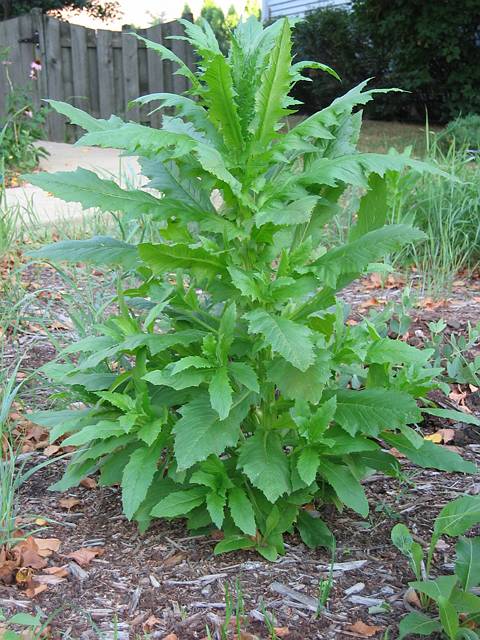
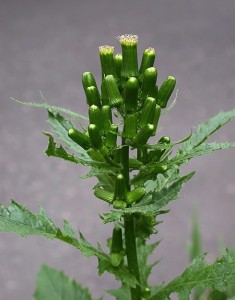
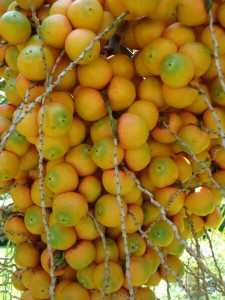
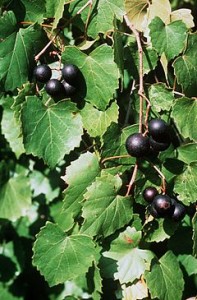
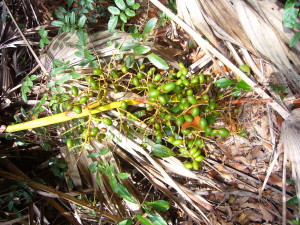
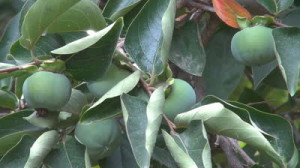
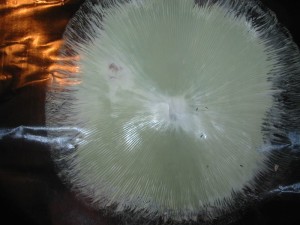


I live in coastal Mississippi and I am also noticing early arrivals of fall crops. Locally, elderberries are filling out and look to be ripening early this year. Incidently, check out the new website for my televivion show, ‘COOKING WILD’. Website is COOKINGWILD.TV, and gives show times and channels. We are always looking for guests to appear on the show with outdoor skills in wild foraging, prep and cooking, and survival skills. I hope you will be a guest often. We also have links available for your DVD sets. Keep up the great work, you are a real inspiration to all of us. Chaz
I do miss being in FL the time of year for pindo palm fruits. Butia capitata is the common one I see the most around FL… I have also seen the less stout-appearing Butia yatay in a few places, and also Butia eriospatha with a few plant collectors. There is also a Butia odorata that people are growing for increased cold hardiness – the seeds have been available for a decade through RarePalmSeeds(.com). I know many people planted them in FL, GA and SC. I’m not too familiar with all the distinctions between all of them, but all do bear an edible fruit. I suspect the vast majority are Butia capitata, with a few exceptions here and there.
I’ve had eating fireweed on the backburner after a few failed attempts. I’ve spared several tall individuals out in the garden, however, so I think it’s time to break out the sesame and the tamari!
how can you tell the difference between fire weed and wild lettuce or the other poisonous stuff?
does fire weed have milky sap?
what does it smell like ? can you give me an idea on what is smells like?
Study is how one sorts them out. Fireweed is fairly easy to separate from wild lettuce but the wild lettuces can be trickly. Fireweed does not have milky sap and is very aromatic.
I am harvesting a huge crop of wild muscadine grapes from the woods around our house this year.. I am having to put a 10′ ladder on the bed of the pickup truck to get to what I can’t otherwise reach.. there are many more even higher. I guess the birds will get them.
What is the botanical name for fireweed? My Peterson guide and google show a different plant.
I answer those question in my very large article on my website. That is why there is a link to that article in the newsletter.
The Green Spored Parasol you speak of must also be called the Green Spored Lepiota or Chlorophyllum Molybdites. I didn’t know that it was the only green spored mushroom in the USA, however. That’s what I love about your blog…. it covers so many wonderful subjects.